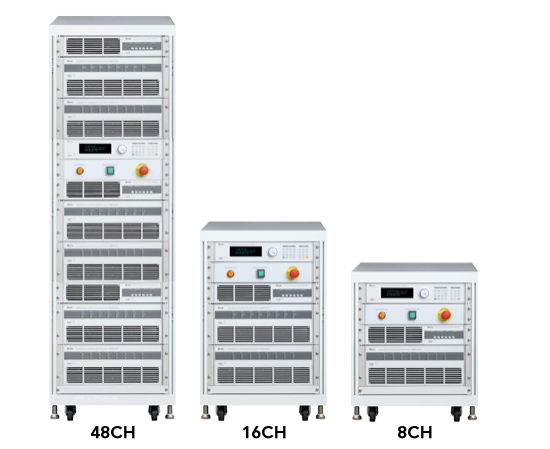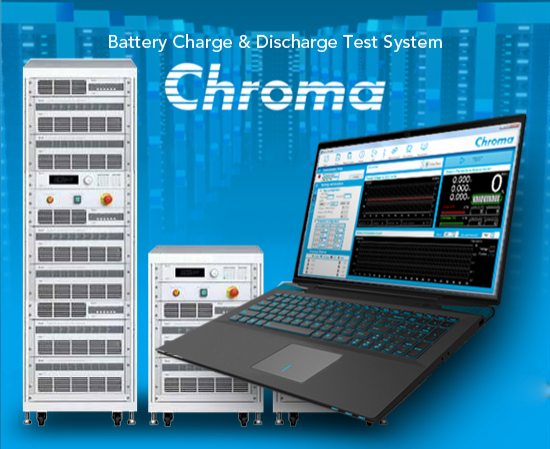Description
The Chroma 17040 Regenerative Battery Pack Test System is a high precision system specifically designed for secondary battery module and pack tests. It has an energy regenerative function to greatly reduce power consumption during discharge, and ensure a stable power grid without generating harmonic pollution on other devices – even in dynamic charge and discharge conditions. It is capable of recycling the electric energy discharged by the battery module back to the grid reducing wasted energy that is discharged by traditional equipment in the form of heat, thus reducing the HVAC requirements.
The Chroma 17040 system has built in parallel channels and dynamic profile simulation functions. The parallel capability increases the charge and discharge current and power to its maximum, thus increasing the efficiency and flexibility of device usage. The dynamic profile simulation allows the user to load a battery waveform of a given drive profile in either current or power mode to meet the NEDC/FUDS requirements. Its bi-directional architecture ensures that the current will not be interrupted during the charge and discharge transient state so that the driving conditions can be accurately simulated to be in line with the ISO, IEC, UL and GB/T international testing standards.
Equipped with Chroma’s powerful “Battery Pro” software, the 17040 system has flexible test editing functions to perform independent channel tests, and conforms to the diversified requirements for testing secondary battery packs with high safety and stability. It also supports power failure recovery functions that ensure test data is not interrupted.
The test system has multiple safety features including Over Voltage Protection, Over Current Protection Check, Over Temperature Protection, and external parameter detection to ensure protected charge/discharge testing on the batteries. Furthermore data loss, storage and recovery are protected against power failure.











